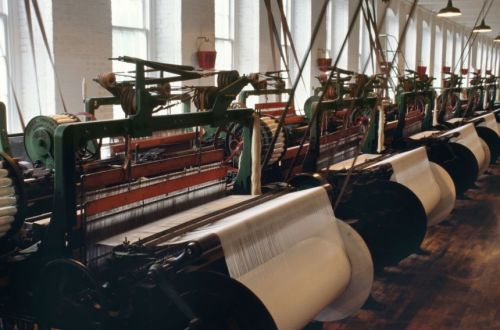Firsts in History
-
History of the Personal Computer
Alan Kay considers the LINC (1962) the first Personal Computer. But most people think of Gates and Jobs when associations are made to the personal computer. This association is well deserved. Gates and Jobs developed major innovations that literally put the PC on the everyday person’s desk and made it mobile from there. Bill Gates had the goal to put the personal computer into every home. It was at the young age of 13 that Gates began programming in Basic. Fifty Years of BASIC, the Programming Language That Made Computers Personal The computer programming language acronym BASIC stands for “Beginner’s All-Purpose Symbolic Instruction Code” The combination of Gates and BASIC started…
-
IBM Introduces the System/360
May the computers unite and with that revolutionary concept the IBM System/360 was born. Before the uniting of computers into a network of systems, each was its own creation uniquely customized for each of IBM’s clients. It has been 50 years since the 360 mainframe was introduced in 1964. It boasted the first mainframe computers that IBM customers could optimize from a lower cost model to something upgraded in power. ABC News
-
Never Give Up
Diana Nyad, a long distance swimmer, finally succeeded on her fifth try at attaining her arduous swimming goal today, Monday, September 2, 2013, at the age of 64. She swam 110 miles from Cuba to Florida. Although the area is shark infested, she did not use the protection of a shark cage. Let her be an example to us all in the principle of never giving up. Read More at NBC News
-
Earliest Evidence of Pythagoras’ Theorem
To answer the question of what is the first evidenced knowledge of the familiar equation, a^2 + b^2 = c^2, named after the Greek philosopher Pythagoras (569-500 B.C.E.), depends on who you ask. Credit for this geometrical proof has been attributed to, of course, namesake Pythagoras, but also to the ancient Babylonians via the tablet Plimpton 322, the ancient Chinese from the Zhou Bi Suan Jing (c. 100 B.C.E.- c. 100 C.E.), the Indian mathematician Bhaskara, and to Euclid who included a variation in his text The Elements. Though the jury may be out on the rightful owner of being the first, it is evident that the ancients understood the…
-
African-American Achievements
Fact #1 Soccer phenom Freddy Adu was the youngest athlete to play in a professional American sports league. Fact #2 The Shakespeare Memorial Theatre at Stratford-upon-Avon honored Ira Aldridge with a bronze plaque. He is the only African-American actor to receive this tribute. Fact #3 BET was the first African-American controlled company to sell shares on the New York Stock Exchange. Fact #4 Macon Bolling Allen was the first African-American to pass the bar and practice law in the United States in 1845. Fact #5 Lawyer Macon Bolling Allen was the first black American Justice of the Peace and the first African-American licensed to practice law in the U.S. Fact…
-
First American Flag
Five myths about the American flag By Marc Leepson, Published: June 10, 2011 1. Betsy Ross made the first American flag. The Betsy Ross story is the most tenacious piece of fiction involving the flag. There simply is no credible historical evidence — letters, diaries, newspaper accounts, bills of sale — that Ross (then known as Elizabeth Claypoole) either made or had a hand in designing the American flag before it made its debut in 1777. The story cropped up in 1870, almost 100 years after the first flag was supposedly sewn, when William Canby, Ross’s grandson, told the Historical Society of Pennsylvania in Philadelphia that his grandmother made the…
-
The First Corvette
On this day in 1953, workers at a Chevrolet plant in Flint, Michigan, assemble the first Corvette, a two-seater sports car that would become an American icon. The first completed production car rolled off the assembly line two days later, one of just 300 Corvettes made that year. The idea for the Corvette originated with General Motors’ pioneering designer Harley J. Earl, who in 1951 began developing plans for a low-cost American sports car that could compete with Europe’s MGs, Jaguars and Ferraris. The project was eventually code-named “Opel.” In January 1953, GM debuted the Corvette concept car at its Motorama auto show at the Waldorf-Astoria Hotel in New York…



